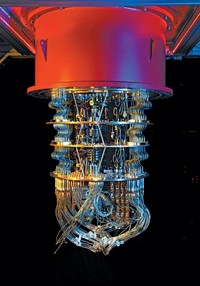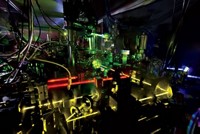Advertisement
Grab your lab coat. Let's get started
Welcome!
Welcome!
Create an account below to get 6 C&EN articles per month, receive newsletters and more - all free.
It seems this is your first time logging in online. Please enter the following information to continue.
As an ACS member you automatically get access to this site. All we need is few more details to create your reading experience.
Not you? Sign in with a different account.
Not you? Sign in with a different account.
ERROR 1
ERROR 1
ERROR 2
ERROR 2
ERROR 2
ERROR 2
ERROR 2
Password and Confirm password must match.
If you have an ACS member number, please enter it here so we can link this account to your membership. (optional)
ERROR 2
ACS values your privacy. By submitting your information, you are gaining access to C&EN and subscribing to our weekly newsletter. We use the information you provide to make your reading experience better, and we will never sell your data to third party members.
Analytical Chemistry
Three Share Nobel for Optics Discoveries
Americans, German honored for both theoretical and practical breakthroughs
by Aalok Mehta
October 10, 2005
| A version of this story appeared in
Volume 83, Issue 41
NOBEL PRIZE IN PHYSICS
Three physicists have won the Nobel Prize in Physics for their revolutionary work applying quantum theory to optics.
Roy J. Glauber, 80, of Harvard University will take home half of the $1.3 million prize for his contribution to the quantum theory of optical coherence, according to the Royal Swedish Academy of Sciences, which awards the prize.
Glauber found a way to describe some puzzling optical effects by applying quantum field theory to the behavior of light. His theory details the dual nature of light—it can be thought of as consisting either of waves or particles known as photons—and explains why light from most regular sources differs from laser light. In lasers, light is coherent—its rays all have the same phase, wavelength, and direction. The work pioneered the field of quantum optics and paved the way for developments in quantum encryption.
The other half of the prize money will be split between John L. Hall, 71, of JILA, a physics institute in Boulder, Colo., run by the University of Colorado and the National Institute of Standards & Technology, and Theodor W. Hänsch, 63, of the Max Planck Institute for Quantum Optics, Garching, Germany, and Ludwig Maximilians University, Munich.
According to the Swedish Academy, the pair is being honored “for their contributions to the development of laser-based precision spectroscopy, including the optical frequency comb technique.”
Hall and Hänsch’s techniques have allowed scientists to make very accurate measurements of the frequency of light—up to 15 decimal points of precision. Their comb technique, in particular, has allowed physicists to examine the stability of nature’s constants over time and to develop extremely accurate clocks and global positioning system technology.





Join the conversation
Contact the reporter
Submit a Letter to the Editor for publication
Engage with us on Twitter